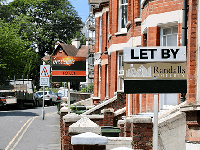
Houses of multiple occupancy, or HMOs, are rental properties that allow at least three, non-related tenants to live together. They can be a lucrative investment opportunity for landlords, as they tend to provide a higher amount of rental income.
In this guide, we will outline the steps to becoming a successful HMO landlord as well as discuss HMO mortgages.
Step 1: Research and understand the HMO regulations
Before you purchase an HMO property, you need to research the regulations and responsibilities surrounding this type of property. These responsibilities may vary depending on your location, so it is always best to get in touch with the property's local council to find out the specifics.
However, there are some more general regulations that you can typically expect to find. These can include:
- Management agreements: HMO landlords have to adhere to certain management regulations. This can include providing a tenancy agreement, ensuring that deposits are protected by a government-approved scheme, and responding promptly to repair requests.
- Fire and safety regulations: HMOs must provide adequate means of escape in the event of a fire. They must have fire extinguishers and fire blankets in communal areas. Additionally, landlords must install and maintain fire alarms.
- Health and safety regulations: Houses of multiple occupancy must be free of hazards. Electrical systems have to be safe, and gas appliances must be serviced annually by a gas safe registered engineer.
- Licencing: To make sure that the house is being managed correctly, some councils will require a mandatory licence for an HMO. If you are unsure if your property requires one of these licences, you should get in touch with the property's local council.
Step 2: Choose the right property
Once you understand what is required of you, you can choose a property. It is important to consider certain factors when picking a house.
Firstly, the location you pick is vital to the success of your property. Students and young professionals tend to be the primary tenants for HMOs. It might be useful to research properties near universities to attract these kinds of tenants.
You should also consider the layout and size of the property. It must be big enough to comfortably house multiple tenants, so should have a few bedrooms. You may also need to consider the number of bedrooms, as some councils will require you to have an HMO licence if the property has over a certain number of bedrooms. It should also have enough communal space, such as a kitchen and living room, to accommodate multiple people. You might want to consider a property with multiple bathrooms, or the space to add more bathrooms.
It is important to think about the condition of the property. You should look for houses that are in good condition or that can be refurbished to a good standard. Check out our guide; ‘how to save money on home improvements’, to find out more about refurbishments on a budget.
Additionally, you have to evaluate the cost of the property. Look for properties that are priced competitively. Consider how much any renovations may cost on top of the sale price. Plus if you are required to have an HMO licence, you need to consider how much this will cost, prices will vary depending on the council. You should also evaluate how much rental income could be generated from the property, and whether it will be enough to cover your costs, and mortgage (if you are using one). It’s important to consider whether the property has the potential to generate a return on investment.
Step 3: Consider your funding
Once you have an idea of the property you would like to buy, you should think about how you are going to afford it.
HMO mortgages are available through a number of lenders. They are designed specifically to help landlords buy houses of multiple occupancy. They differ from standard buy-to-let mortgages slightly, although their principles are largely similar. The main difference between them is that the lending criteria can be slightly stricter on HMO mortgages. This is largely due to lenders seeing them as a higher-risk investment, due to the costs of running the property and the potential of not finding enough tenants to fill it.
If you are lucky enough to have the cash to pay for the property outright, you should consider this as an option. Taking out an HMO mortgage will mean paying interest. By purchasing property outright you can avoid this. However, many people don’t have this option available.
One finance option that can help you with putting a larger deposit down is a secured loan. This is where you use a property you already own as security for the loan.
With all that in mind, it’s a great idea to speak to an adviser to find out the most suitable solution for you to purchase your HMO property.
Step 4: Prepare the property and advertise
Once you have bought your property, it is time to get it ready for tenants. This might include making necessary repairs, installing fire safety equipment and ensuring the property meets all health and safety regulations.
It is not a legal requirement, but most HMO landlords are generally expected to provide furniture in their properties. This is because often students and young adults will not have furniture. So, you may want to think about furnishing the property.
Then, you will need to think about advertising the property. You can do this through online listings, newspapers, and by word-of-mouth. Sometimes universities may help their students find properties so you could try contacting them to see if they can list your house. After this, be prepared to show potential tenants around the property.
Step 5: Manage the property
As the landlord, you will be responsible for managing the property and addressing any concerns or issues the tenants may have. This includes collecting rent, handling maintenance requests and making sure the property remains in compliance with relevant guidelines.
However, you can use a letting agent to help you with all of this if you are short on time, but this will incur costs.
Summary
Becoming an HMO landlord can involve a lot of careful planning and attention to detail. However, it can be a great source of income if done correctly. It is important to remember to research regulations, properties and the demographic of tenants. Managing the property can be a lot of work, so you have to be comfortable dealing with concerns and queries from your tenants and making sure the property is up-to-date with licensing and regulation requirements.
Any property used as security, which may include your home, may be repossessed if you do not keep up repayments on your mortgage.




